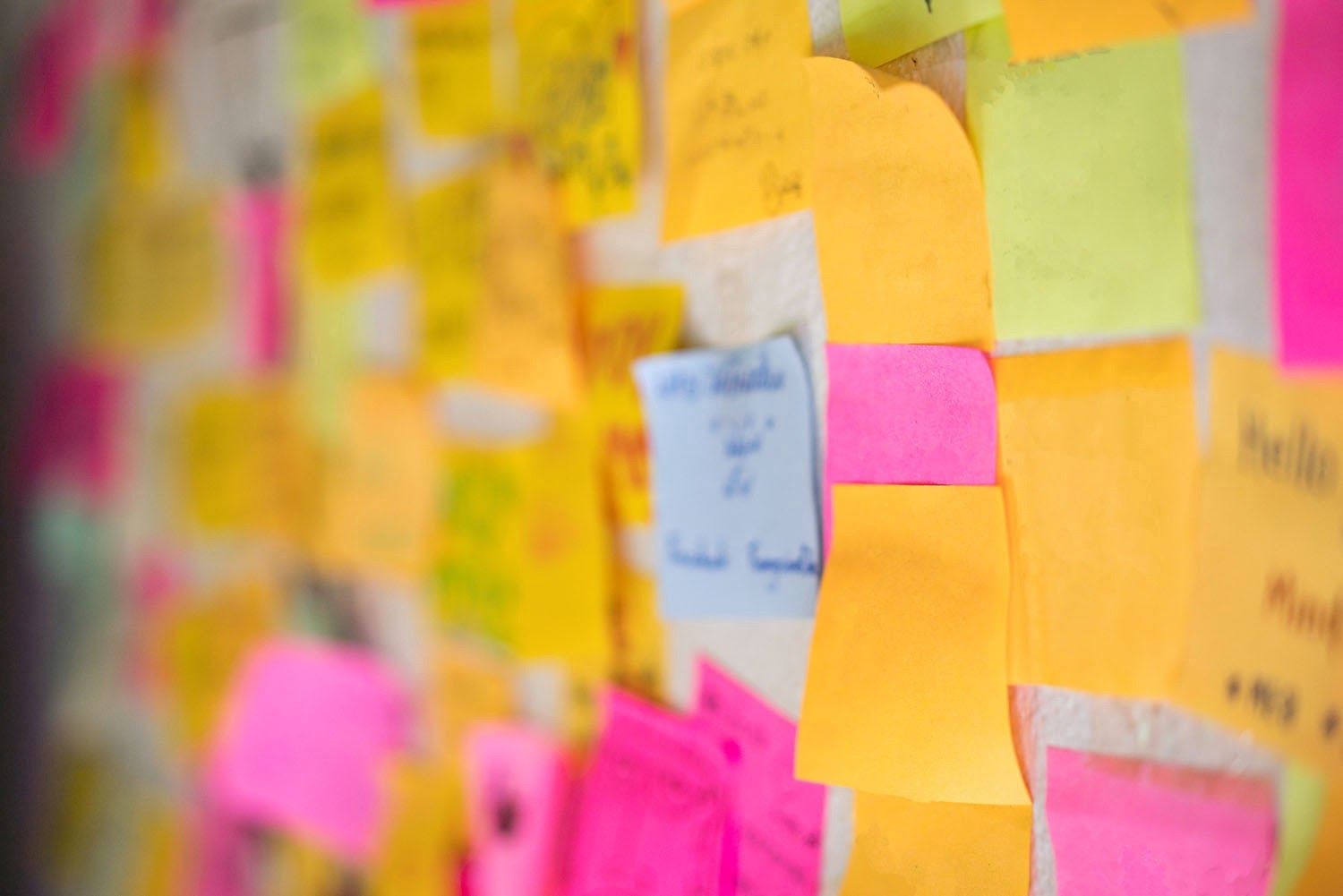All communication relies on one or more carriers. At the most basic level, when you’re speaking to a group of people in a room, the air is the carrier for the sound waves moving through it. You pass air through your vocal chords and shape your mouth in funny ways, and a bunch of compression waves emerge and fill the room with information that others then decode. No one can just grab the words out of the air to stop them from reaching someone else. The carrier is unenclosable.
For the sake of contrast, let’s say your boss puts out a suggestion box, in order to give you and your fellow employees the opportunity to make a difference in the workplace. Sounds nice, right? And yet, the box is enclosed; there’s no way to see how many suggestions have been made, or which ones have been discarded before even reaching the people who could implement them. The system includes a filtering mechanism that allocates some degree of control to whoever is in charge of the box. And isn’t the suggestion box system designed, in part, to enable that layer of control? If they didn’t want the ability to filter, they might have just invited suggestions openly during a meeting with everyone present.
A Brief History of Communication
Before modern technology, or really before the development of written language, communication was generally transmitted by unenclosable carrier. Oral traditions were the norm in prehistoric times, and they are preserved today in indigenous cultures around the world — cultures we often respect for their ways of reaching alignment quickly, resolving tensions directly, and treating their members with honor. (Consider our postmodern fascination with the talking stick and council of elders.) This social wisdom is surely related to the unenclosable medium of communication they used.
The point at which direct oral communication reaches its limits is the point at which it becomes important to communicate at scale, across distance or time. Want to rally a crowd? You’ll need amplification. Want to coordinate troops in the field? You’ll need some form of written communication. Want to operate a nation or empire? You’ll need carriers of all different sorts: messengers, letters, telegraphs, whatever.
And yet, all of the carriers we have successfully used to extend the reach of communication have also introduced more potential for enclosure, which in turn has led to power imbalances. Writing gave rise to the literate class, the clerical class, who by virtue of privilege or position suddenly had outsize power, with access to libraries and information and the ability to make deals or even laws that others couldn’t understand without the help of the literate. The printing press gave rise to the editors, publishers, and booksellers who determined which books were published or promoted. Broadcast media gave rise to the media empires who could then influence what was broadcast. The ability to control the carrier results in the ability to control the message.
Covert and Overt Control
What’s actually true about oral cultures is not that control over messaging is impossible, but rather that the available control mechanisms are more overt. You can stop someone from speaking up around a fire if you physically attack them or try to shout over them. But then everyone knows you’re doing that, which means that your actions are subject to whatever social feedback mechanisms exist to temper abuses of power. So, really, what carrier enclosure gives rise to is covert power. The manager filtering the suggestion box; the allocation of FM bandwidth to someone over someone else; the private understandings between interest groups and politicians.

Awash in Enclosable Carriers
As the speed and scale of communication has increased, so have the layers of enclosable carriers on which our communication relies. In newsprint and on television, it’s the advertisers, as well as executives who are bound to the interests of boards and shareholders, who exert (largely unseen) control over the content we receive. Our phone lines are subject to a variety of costs, controls, and oversights that we don’t have much of a choice about. Even getting on a plane (or flying one’s own) to a distant land — which is another way to communicate across distances — is highly constrained by licenses, airspaces, borders, passports, airport fees, and so on.
And of course we have the internet, which has given us a taste of radical participation and democratized access to information, but whose filters on access and information have begun to cause increasing alarm. There are centralized entities controlling the allocation of web addresses, domain names, and root servers. ISPs have the ability to block access to the internet altogether. Facebook, YouTube, and the like decide what content is inappropriate, and, perhaps more importantly, what content appears in your feeds. Amazon determines which products you can use the convenience of its site to buy, as well as which to promote. And, of course, Google steers you to some web sites over others, according to its secret algorithms.
Our ability to coordinate activity at scale has never been greater, but that coordination is also subject to centralized control and corruption like never before — and really to an unknown degree, because it is largely covert. Do we have any way of knowing the extent of Russian influence on recent U.S. elections? We don’t. We also don’t know the degree to which our ‘real’ news is adulterated and filtered, which is part of what makes fake news such an intractable problem: when all news is vulnerable to corruption to some degree, it’s hard to tell the difference between legitimate and falsified sources.
If we want to move into an era of intelligent, mutually beneficial, worldwide coordination, we will have to address the problem of communication enclosures. But first, a word about money.
The Enclosability of Money
Monetary systems are special cases when it comes to enclosability and covert control. We all have the capacity to produce value, but we have allowed our exchange of value to be mediated through money, which we’re not allowed to produce. (If we do, it’s called counterfeiting.) The few who are allowed to issue money use that privilege to constrain our participation in the marketplace.
In principle, a financial transaction could be as simple as two people exchanging value through a direct agreement, but in our world of enclosable carriers, transactions are controlled by many third parties that we don’t get to choose.
By way of example, let’s look at transacting through PayPal, which claims to offer peer-to-peer payments to ‘anyone with an email address’. But if you want to pay your friend for something, you’re subject to many layers of control you cannot opt out of:
- You must connect to the internet via a semi-monopoly of telcos/ISPs.
- The connection must supply an IP address, which is under the control of ICANN, the international body that delegates ranges of addresses to specific licensees of their choosing.
- You need to establish an HTTPS connection, which requires certificates issued by a root authority.
- Your email must be routed to and stored on an email server, which is typically not under your control.
- The email address uses a domain name, which is subject to central control via ICANN, domain registrars, root servers, and nameservers.
- You must go through the PayPal app or website, which is under their corporate control (as well as all the aforementioned domain handlers and routers).
- Your PayPal account must be active and in good standing, at their discretion.
- You transact in a currency, whether dollars, euros, or yen, that is fundamentally out of your control. Governments can freeze accounts, limit international transactions, and garnish wages, not to mention influence the money supply in ways that affect what your currency is worth.
- You use a central payment source, such as a bank or credit card, that can reverse transactions, charge fees, block access, and close accounts.
Does that sound like peers interacting directly with each other? Or does it sound like a bunch of people got invited to your party who you’d have preferred to leave out of the mix?
But What About My Favorite Blockchain Project?
And so we come to the blockchain and, more broadly, the whole decentralization movement. If you’re a participant in this ecosystem, you might be thinking that blockchain-based cryptocurrencies and other blockchain applications, at least the ‘best’ ones, are precisely the antidote to the problem of carrier enclosability.
It’s true that blockchain applications have, in many cases at least, offered an exciting means of collaborating outside the reach of outsized government and corporate middlemen. But how unenclosable are they really? Blockchain protocols all rely on some mechanism of global consensus to determine which transactions are considered legitimate enough to be added to the shared record. This means that many nodes – computers on a given network – must agree with one another before officially adopting any information, then storing it as a global state, meaning that all nodes hold all the same data. It’s an understandable approach: replicating data globally might seem like the only way to coordinate at scale without being subject to centralized authority or being susceptible to data-tampering.
One problem with this approach, though, is that global consensus mechanisms turn out to be a form of carrier enclosure, since they necessarily give power to some people over others to determine the legitimacy of transactions. Ordinary users like you and me do not write directly to the blockchain, nor do we participate in the consensus mechanism that results in data being written to the blockchain. We defer to miners and stakers do those things on our behalf, and in doing so we turn over our authority to them to say what’s written to the record.
What’s more, not all miners and stakers have equal power. In proof-of-work (PoW) protocols, those who own more computing resources have more say. In proof-of-stake (PoS) protocols, which have become more popular in recent years, those who put up more money as betting stakes have more say. The more computing resources or the more betting stakes you own, the more money you make, which earns you the ability to buy more of those things. Thus, both protocols have a rich-get-richer effect and converge toward greater and greater consolidation of wealth and power over time.
Even more carrier enclosure has resulted from blockchain’s attempts to solve its efficiency problems. It turns out that achieving global consensus and managing global state require a tremendous amount of processing power and storage capacity, resulting in wait times and fees for every transaction, as well as posing an obstacle to blockchain’s ability to scale to the needs of real-world challenges. Blockchains and blockchain-related projects have tried to address these issues in various ways: so-called ‘layer-1’ solutions attempt to increase the efficiency of global consensus, generally by concentrating authority to some nodes more than others in determining the global state (EOS has 21 ‘block producers’, Cardano has ‘slot leaders’ and ‘pool representatives’, and TRON has 27 ‘super representatives’), while ‘layer-2’ solutions perform computations or store data off-chain on more centralized networks or more concentrated ‘side chains’, then periodically merge records into the blockchain. Both layer-1 and layer-2 solutions channel control through an increasingly narrow club of authorized representatives who are empowered to accept (or refuse) our transaction.
And real communication enclosures can happen and have happened in blockchain projects. The Ethereum hard fork in 2016, right-minded as it may have been, was a means of invalidating transactions that had occurred. EOS has also reversed transactions, as has Bitcoin Cash.
So, even though the very intention of many blockchain projects is to address intermediation and the centralization of power, they are actually subject to the same kinds of power imbalances we see in other mediums. It’s a tilted playing field, and even a slightly tilted playing field results in a self-reinforcing feedback loop that eventually leads to massive wealth imbalances – which is a fair narrative for what’s happened in economies around the world over the course of the last 500 years.
So we’re back to our original question: is it possible to have a system of communicating and transacting that 1) is truly unenclosable and 2) is capable of massive scale?
Having It Both Ways
In considering how a communication system might be both unenclosable and scalable, let’s look at the evolution of language itself. How does language arise? Who gets to change the rules of language? We do. Any one of us can create a new word, turn of phrase, or other language pattern that may or may not spread based upon whether others freely adopt it. If it spreads far enough, it becomes part of a language. There is no central committee that determines what you can say or not, or what gets adopted or not.

So, a new ecosystem of communication might look something like the spaces of language itself. We can imagine a scenario in which anyone can spin up new protocols for interacting — protocols that can be voluntarily adopted by those who choose to participate in them. Anyone is free to transfer the rulesets of any given space into another space, just as anyone is free to populate an uninhabited island, start speaking any particular language there, and invent new words.
This does not mean an absence of rules. Protocols are essential within any given space for filtering signal from noise, and to avoid the gaming of that space. People need to be free to create any kind of space on the network, but that doesn’t mean that all the activities within voluntarily joined spaces must also be unrestricted. To continue with our analogy: maybe on a certain island there’s a protocol that new residents introduce themselves at a weekly meeting, or post a bio on a bulletin board or profile page. Maybe there’s a social norm not to interrupt one another at certain meetings, and there might be corrective protocols activated if someone repeatedly violates that norm. Notice, though, that these rulesets only pertain to the particular scope of this island (which people can choose to join or not), rather than being built into the language itself or governing migration among islands in general.
So, one key ingredient in making any system fundamentally unenclosable is free association: the ability for anyone to create segmented spaces that people can join or not, with rulesets that are particular to those spaces. An unenclosable version of Wikipedia would be free of the centralized servers that host the data today, but it would still have protocols that say how articles are written. An unenclosable version of Twitter would still have a character limit. It wouldn’t make sense for someone to be able to post a tweet on Wikipedia or an encyclopedic article on Twitter. Within the scope of each app, people are free to express themselves according to the parameters they opted into when joining the app.
Many apps will even need to have centralized aspects of control, such as moderation by individuals or groups. But if the underlying carrier system is unenclosable, everyone owns and controls their own data (versus having it held in centralized or third-party enclosure points), so everyone always has the option of leaving the application space for any reason, including if they don’t like some new rule or the way the space is being moderated.
Which leads us to another fundamental aspect of an unenclosable system: forkability, which is the freedom for anyone to spin up alternative application spaces, based on the same (or similar) source codes and rulesets, and invite people to the new version. For true forkability, users need to be able to migrate easily between versions, taking their data from one version — such as their complete activity history on a social network or search engine — and load it into the new version. This is, of course, very much not the case with the likes of today’s Facebook and Google, who own and control your data, making only a fraction of it available to you.
A Natural Selection
With free association and forkability in place, an evolutionary phenomenon emerges: the spaces themselves, each with their own patterns and protocols, enter into a process of natural selection. The ones that solve problems better or serve people better will gain greater adoption, while the ones that don’t do as good a job will die off. To return to the island analogy again: if people can move freely between islands, bringing language patterns from one to the other, the dialects that are most suitable to people’s needs will be the ones that thrive and spread.

Holochain Is Unenclosable by Design
Holochain is designed to foster this kind of evolution. It’s a framework for building and running applications in a truly peer-to-peer way, with zero centralized infrastructure and therefore no vulnerability to corruption over time. Wealth and influence can still flow within the application spaces according to patterns mutually agreed to within those spaces: reputation systems, ownership systems, subscriptions, sales, badges, degrees, or whatever else makes sense for the nature of the application. But no one can gain influence by simply controlling the medium of communication itself. The work of holding and transferring the data is distributed among the regular participants within the application, with everyone hosting their own data and sharing a bit of the load of hosting the data published to the network. Same thing with the work of validating data, such as verifying account balances or making sure posts conform to formatting rules: that job is also spread equally among the regular participants within the application.
And in case you don’t like the rulesets of a given application space, Holochain guarantees, through a combination of technical and legal provisions, that you can spin up alternatives and take your data with you between applications.
(We get deeper into how Holochain works in Part 3 of this series.)
The Future of Communication
What becomes possible in a world of unenclosable carriers isn’t just better versions of Twitter or Wikipedia. It’s an explosion of entirely new ways of collaborating and transacting whose forms we can only begin to guess at. What might be possible if we didn’t have corporations, governments, or surveillance systems in the middle of our communication? Could a system of unenclosable carriers help us solve some of humanity’s most intractable problems? We turn to this very question in Part 2 of this series.




